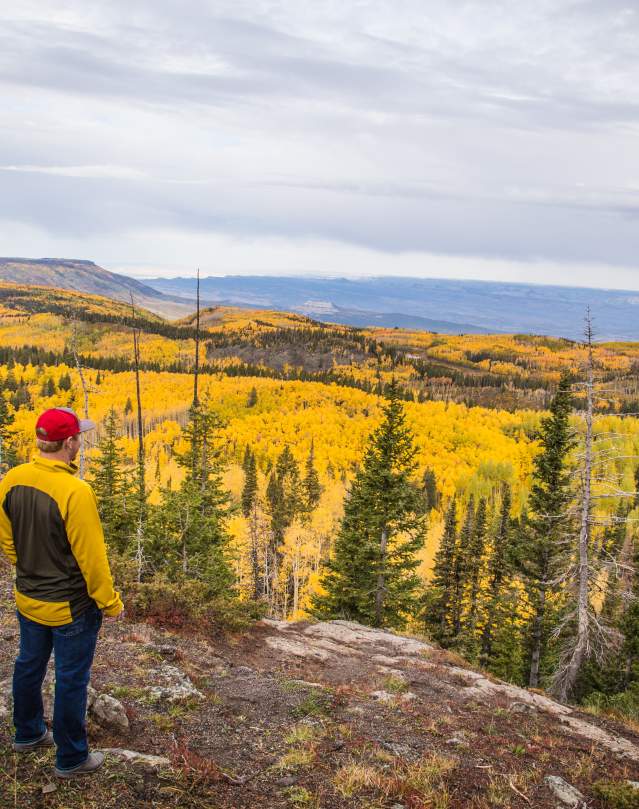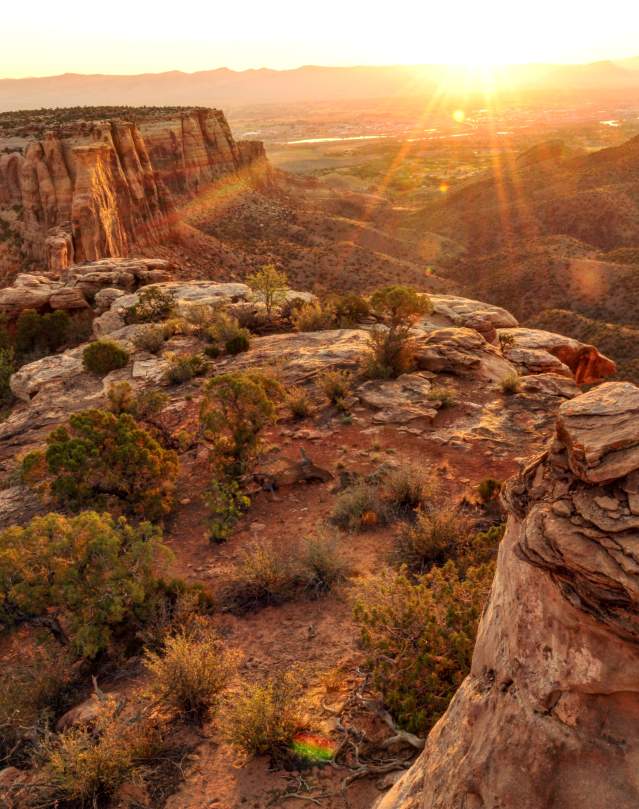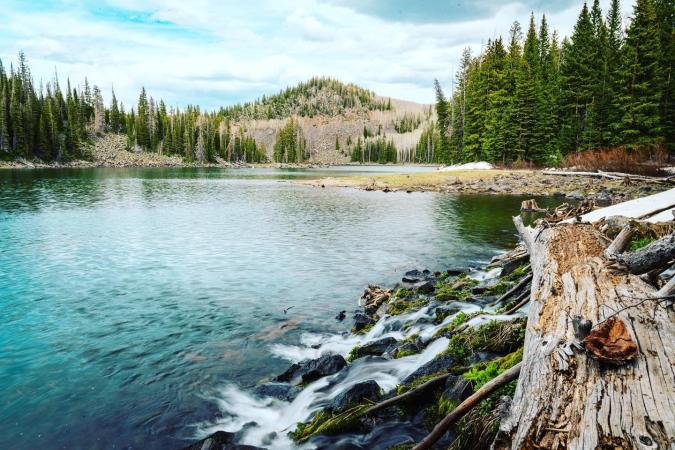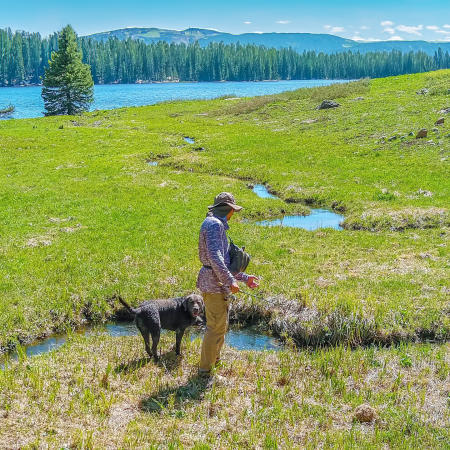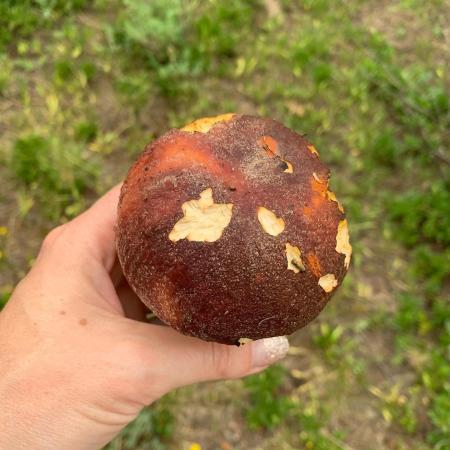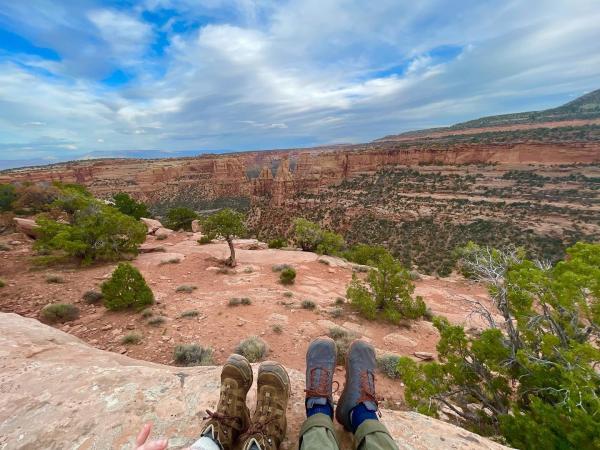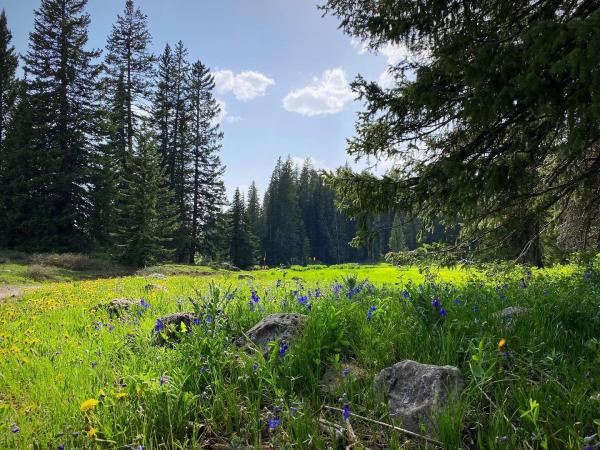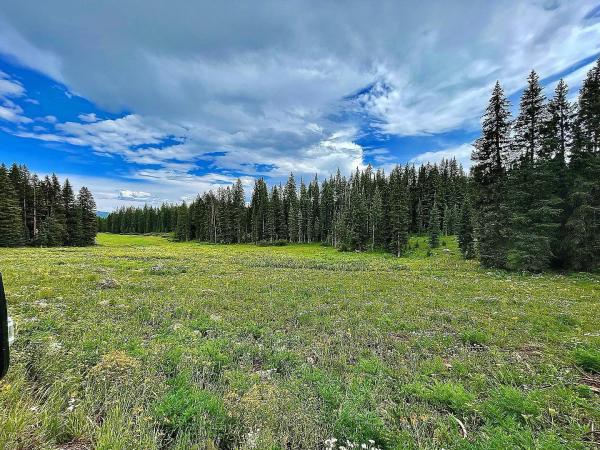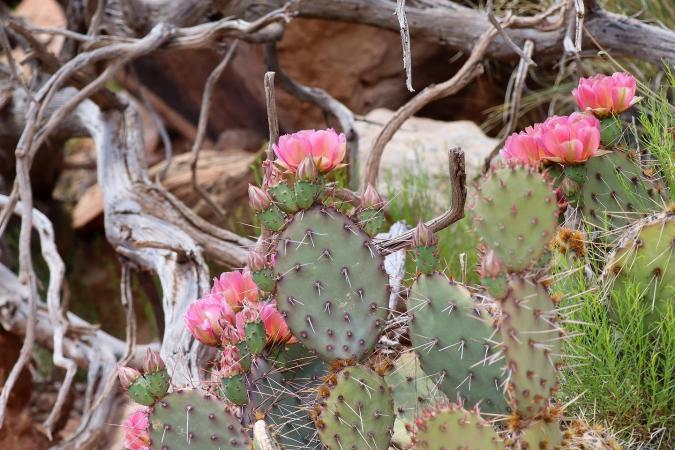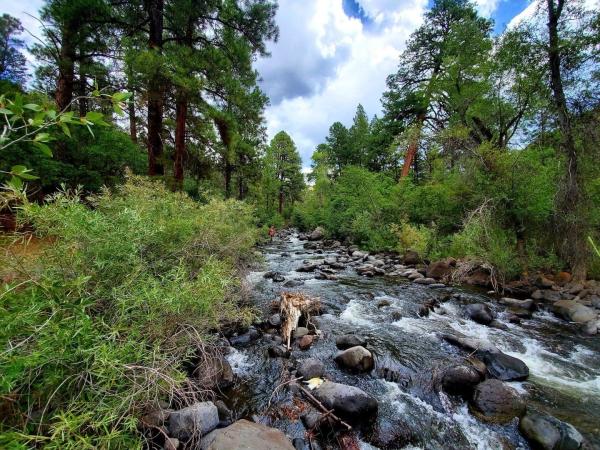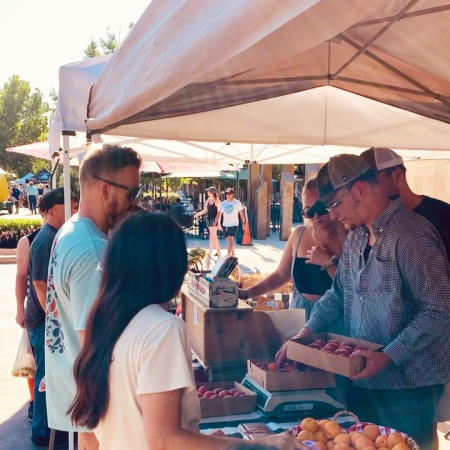5 Minute Read
When you picture outdoor activities in the Grand Junction area, you probably think of scenic hikes, thrilling bike rides, and cliffside climbing excursions. But there’s a less talked about activity that’s sure to excite the adventurous foodie: foraging in Colorado.
Foraging is the act of identifying and gathering edible plants in the wild. Exploring Colorado’s unique landscapes while collecting a wholesome snack along the way is both rewarding and nourishing. Here is a list of some of the tastiest edible plants Colorado has to offer.
1. Watercress
Watercress is a leafy green member of the mustard family. Its peppery flavor makes it a bold addition to salads, soups, and sandwiches. Since watercress is packed with antioxidants, it may help to lower the risk of diseases like cancer or diabetes.
Where does watercress grow?
Watercress thrives in the cold water. So, look for it near streams or along the banks of the Colorado River in the Grand Junction area. Since this little plant is sturdy, it has a pretty long growing season, but your best chances of finding it are between March and October.
2. Wild Onions
Colorado’s wild onions, also known as Geyer onions, have a thick stalk and small pink flowers. The entire plant is edible, including the bulb and the flowers. However, unlike grocery store onions, wild onions have a tiny bulb. So, many people harvest the stalk and leave the rest in the ground. You can use wild onions as a garnish in a variety of dishes, or you can place them center stage with this delicious garlicky creamed wild onions recipe. Tasty!
Where do wild onions grow in Colorado?
Wild onions grow in a variety of conditions, but you’re most likely to find them in meadows, hillsides, and next to streams like Leach Creek —just a 10-minute drive from Grand Junction. This pungent plant blooms from May through August.
3. Porcini Mushrooms
Known as one of Colorado’s most popular mushrooms, porcinis look like large brown hamburger buns. Their nutty flavor makes them a tasty addition to pasta, risotto, or any dish that calls for cremini mushrooms. As a bonus, dried porcini mushrooms contain eleven grams of protein. This makes them a great plant-based alternative for beef jerky.
Where do porcini mushrooms grow?
While you may spot a porcini at 7,000 feet, you’re more likely to see one at higher elevations. Look for porcini mushrooms lounging under spruce trees and along mountain streams below the treeline. The Crag Crest Trail is lined with forests of spruce trees and rises above 10,000 feet, making it a bountiful place to hunt for porcini mushrooms. Bring a big basket! Porcini mushrooms prefer warmer weather. Plan to start hunting in June and expect to wrap up the search come September.
4. Juniper Berries
Gin lovers might recognize this one because it’s one of the most important ingredients used to make this distilled beverage. Here’s another interesting trivia fact: juniper berries aren’t actually berries. They are tiny seed cones and they give gin its piney flavor. Even if you don’t like gin, there are plenty of delicious ways to cook with juniper berries. This juniper-spiced venison and greens recipe not only tastes great but is healthy for you, too.
Where to find juniper berries
The juniper trees prefer open rocky areas with lots of sun. You can find them all along the Gold Star Canyon Trail if you’re up for an easy hike in the Grand Junction area. But, before you start picking berries, you should know it takes a few years for them to mature. The best way to know if one is ready for harvest is to give it a little tug. If the berry comes off the tree easily, it’s ready to eat. While you can technically harvest juniper berries year-round, fall is the most reliable time to find ripe ones.
5. Dandelions
Many people consider dandelions pesky weeds, but they’re actually a perennial herb you can use in a variety of dishes. Add its leafy greens to salads or use its roots to make a morning cup of joe. Some research suggests that dandelions reduce skin inflammation, making them a wonderful addition to your skincare routine. Your selfie never looked better.
Where do dandelions grow?
Folks often start their Colorado foraging adventures with dandelions since they’re so easy to find. Their bright yellow flowers make them quickly identifiable, and they pop up all over the Colorado terrain. You may even spot a few in your own backyard. Dandelions start popping up as the weather gets warm in March and stick around through September.
6. Wild Strawberries
Colorado is home to wild strawberries during the warmer months. Hikers often spot strawberry plants growing in clumps along the trail. However, these sweet little berries don’t last long. Wild animals like birds, moose, and elk love this trailside treat as much as we do.
Where do strawberries grow in Colorado?
Most of Colorado’s wild strawberries grow in the southwestern area. Dedicated foragers discover them growing on forest floors or open meadows during the summer months. If you can’t find them growing in the wild, grab some at the Market on Main Grand Junction Farmers Market on Thursday nights from June 10 to September 25, 2025 from 5:30 p.m. to 8:30 p.m.
7. Prickly Pear Cactus
The sharp spines of the prickly pear cactus may look intimidating, but this pointy plant is a delicacy. Aside from its spines, the entire cactus is edible. The paddle-shaped stems can be cooked like a vegetable or thrown on the grill. The colorful fruit is sweet when ripe and can be eaten like any other fruit once it’s peeled, and the plant’s vibrant flowers can be used to add a pop of color to summer salads.
Where to find prickly pear cacti
The prickly pear cactus thrives in dry arid climates, making them easy to find in places like the Colorado National Monument. While you can’t harvest plants within National Park Service sites, you can look for them in the surrounding area. The best time of year to forage for prickly pears is late August when the fruit is ripe. However, you can still snag some delicious stems through early winter.
8. Asparagus
You’ve probably seen asparagus stocked in the veggie section of your grocery store. But did you know they grow wild throughout Colorado? This low-calorie veggie is packed with antioxidants and tastes great in pasta, stir fry, or as a side dish.
Where does asparagus grow in Colorado?
You’ll often find asparagus around farm fences or moist ditches from April through July. If you’re hunting for asparagus in early spring, try to locate last year’s dried stalks. Wild asparagus grows in the same spot yearly, so dried stalks indicate you’re looking in the right place.
Delicious foods, without the forage
If you’re looking for these snacks without the search, make sure to check out local farmers markets, like Market on Main, every Thursday night from July 10 to September 25, starting at 5:30 pm. Another popular market is at the Cross Orchards Historic Site on Saturdays from June 14 – September 27, 2025 from 8 a.m. to 12 p.m. Cross Orchards also has demonstrations and lawn games – a truly wholesome experience.
If you prefer to pick your own but don’t want to hunt for your nourishment, visit one of the “you pick it” orchards in the Grand Junction area. You can pick your own fruit right from the tree in these farms to explore. For more orchards, markets, and farms, check out this page and learn about the seasonality of each fruit, so that you know when to start pickin’!
Start foraging in Colorado
Explore the full foodie itinerary on page 35 of the Official Grand Junction Adventure Guide to plan your farm-to-fork adventure in Grand Junction.

